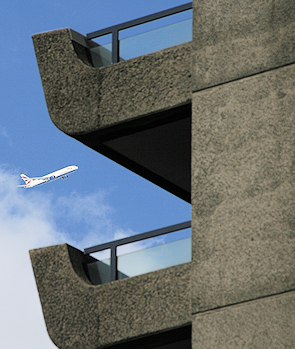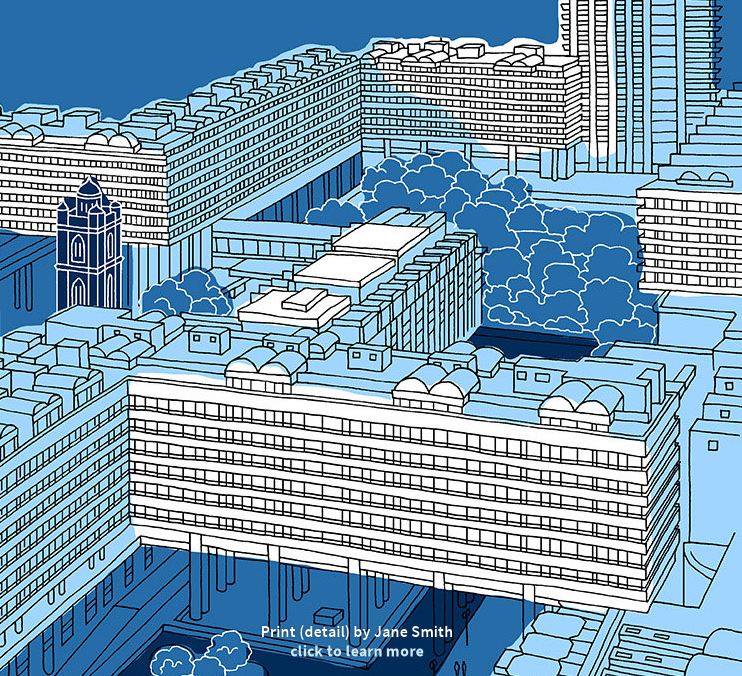Barbican
Barbican, City of London
Originally a defensive structure atop the City walls (pulled down in 1267), then a street and now a housing estate in the north-west corner of the City
In the 19th century the Barbican was a warren of factories, warehouses, markets and shops. Much of it was razed by fire in 1902 and the remainder was devastated in the Blitz.
In 1956 housing minister Duncan Sandys recommended the creation of a model post-war neighbourhood with schools, shops and amenities as well as homes. The architects Chamberlin, Powell and Bon were appointed to design the complex, and created a focal lake, residents’ gardens and the tallest residential blocks in Britain. With 43 storeys, the Barbican’s three towers were not eclipsed the construction of Manchester’s Beetham Tower in 2006.

The restored medieval church of St Giles without Cripplegate was retained as a centrepiece. The remainder of the estate consists of low-rise blocks of apartments, plus the Guildhall School of Music and Drama, the City of London School for Girls and a handful of shops and service providers.
The first of 2,000 flats were completed in the early 1960s and they were originally available only to rent from the Corporation of London. The idea of living in the City – where everything closed at weekends – met with considerable scepticism at first, but soon the waiting list for flats grew to several years. For nearly two decades the Barbican could lay claim to being Britain’s most upmarket council estate. However, the Housing Act of 1980 introduced the right of council tenants to purchase their homes. Many residents bought and sold as soon as possible at a considerable profit and the estate progressively became the preserve of well-paid City bankers and the like.
The Barbican’s rain-stained, hammered concrete slabs detract from its aesthetic appeal but it has achieved grade II listed building status by virtue of its distinctive character.
The Barbican arts centre was built between 1971 and 1982 at a cost of £153 million, which sounds like a bargain now but was a lot at the time. Its buildings are on ten floors, the lowest being well below sea level. The centre claims to be Europe’s largest multi-arts and conference venue and presents a diverse range of art, music, theatre, dance, film and creative learning events. It is also home to the London Symphony Orchestra.
The Museum of London has several paintings of the Barbican and its surroundings, notably Harold Hussey’s depiction of the scene before building began but after the clearance of the former bombsite, revealing the colossal scale of the project.

